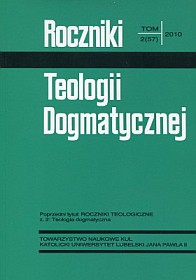Przebóstwienie człowieka według Świętego Serafina z Sarowa
Abstrakt
St. Seraphin, the Orthodox Sage of Sarow, has recently gained great popularity not only in Russia’s Orthodox religiousness, but also the milieu of the Roman-Catholic Church in the post-Soviet territories. In iconography, it is presented as filled with the Holy Spirit, a fact that is usually portrayed with a white and bright robe. This text corresponds with the kind of writing about the person and teaching of St. Seraphin and it attempts to transplant this interests onto the area of Polish dogmatic theology and theology of spirituality. The current importance, novelty, and universality of St. Seraphin’s teaching consists in the fact that it not only gives man hope to be transformed and deified through the grace of the Holy Spirit and His light. Saint Seraphin lived by the principle: accept God, carry God, and give God. Thus outlined the systematic doctrine of man’s deification through the Holy Spirit according to St. Seraphin starts from God and returns to God. Man connected with this process has a chance for an effective activity on behalf of coming closer to the Holy Spirit through a prayerful “bringing Him” to one’s heart. The Holy Spirit, by His nature, is love and is open to stoop to man. Therefore irrespectively of the state of life, whether it is in a religious order, priesthood, or as a layperson, one many experience this grace of deification.

